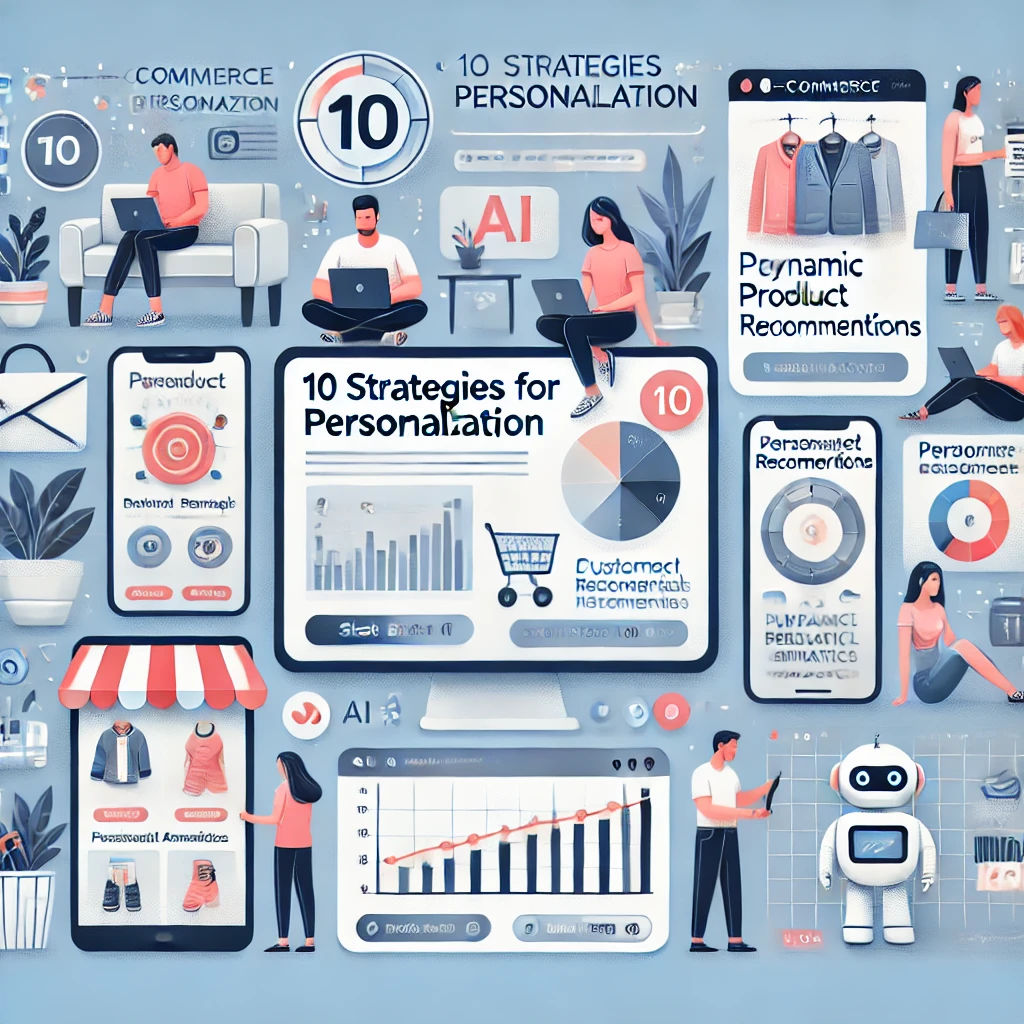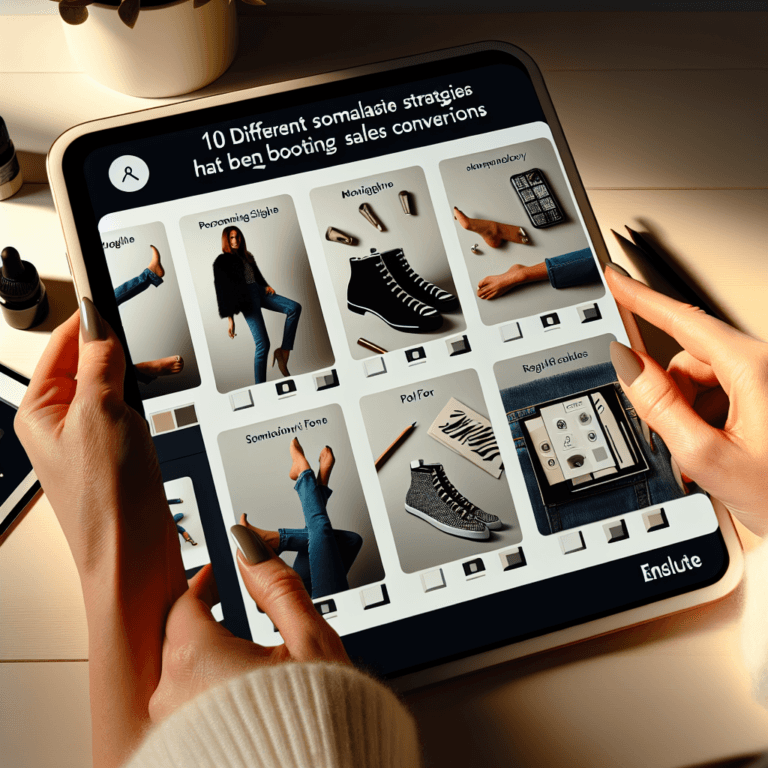Introduction: The Magic of Making Shopping About You
Imagine strolling into a shop where everything seems made just for you. Your size is always there, the styles you love are prominently displayed, and the items recommended? They’re spot on! Welcome to the magic of making the online shopping experience all about the individual. It’s a big win for businesses that want to see more purchases, build loyalty, and create special customer bonds. 80% of people say they prefer to shop with brands that personalise the customer journey. It’s as clear as day—everyone loves a bit of personal attention. Personalisation isn’t just a fancy word; it’s a must-have approach to succeed in the bustling online shopping arena.
How do you turn this idea into reality and sprinkle some personalisation into your online shopping strategy? Let’s explore 10 inventive ways to personalise the online shopping experience and give your customers the delightful, tailored interactions they desire.
1. Build Customer Profiles Using Their Data
When chatting about online shop personalisation, it all starts with data. Collecting customer data helps you draw a colourful picture of your buyers—their likes, dislikes, and shopping habits.
Getting Started:
- Gather first-party data like what they’ve viewed, demographics, left-behind shopping carts, and past orders.
- Keep profiles lively by updating them based on what’s happening now.
- Divide your audience into groups like those who love similar products or live nearby.
Example: Amazon’s “Recommended for You” bit is all about suggesting products using chunky customer profiles. The result? Shoppers feel understood and catered to.
Quick Tip: Keep everything above board and be honest about data use. This keeps the trust intact!
2. Let AI Work Its Magic with Product Suggestions
Think of Artificial Intelligence as your shopping helper. It can sift through heaps of data to guess what your customers might fancy.
Ways to Use AI Well in Shopping:
- Create suggestion boxes like “People Also Bought” or “You Might Like.”
- Send emails with special product ideas based on items users looked at or wanted.
- Make search results custom for each user—faster and easier browsing!
Example: Picture Netflix and its spot-on recommendations. Use this same cleverness to show customers items they’ll adore, keeping them coming back for more.
3. Craft Tailor-Made Email Campaigns
Email and online shop personalisation are best pals. But plain newsletters and blanket discounts just don’t make the cut anymore. Personalised email campaigns matched to what a person is interested in or has done before can seriously boost shopping and keep customers around.
Spice Up Your Email Approach:
- Start emails with the customer’s name for instant interest.
- Add product suggestions or deals reflecting past buys or browsing.
- Time emails for special moments like birthdays or holidays with custom offers.
Example: A gym gear store could say, “Hey [Name], Check Out These Yoga Accessories We Thought You’d Love!” By linking to what they’ve bought before, it feels personal and timely.
4. Roll Out the Welcome Mat on the Homepage
Your homepage welcomes shoppers, and it’s a smarter move if it’s not the same for everyone. A personalised homepage shows returning users you care and helps them find their goodies speedily.
Ideas for a Personalised Homepage:
- Display their latest browsed products or wishlist picks.
- Show collections that reflect what they’re interested in.
- Feature offers or trendy products from their local area.
Example: Etsy does this brilliantly, greeting you with personalised recommendations based on what you’ve liked before.
5. Design Special Loyalty Programmes
Cookie-cutter loyalty plans might fall flat with today’s savvy shoppers. To really shine, your loyalty programme should match how customers shop to personalise the customer journey.
Crafting Personal Loyalty Schemes:
- Give regular buyers early sale peeks or birthday gifts.
- Set up point systems that let shoppers earn rewards suited to their buying habits.
- Deliver tiered benefits that encourage shoppers to keep reaching for better deals.
Example: See how Starbucks makes this work? Their app offers personal rewards based on what you usually purchase. Use this idea to spice up your online store.
6. Use Geolocation for Spot-On Recommendations
Geolocation isn’t just for ads anymore. It’s a clever tool for creating a more meaningful online shopping experience. By using shopper locations, you can provide localised shopping suggestions that really hit the mark.
Using Geolocation:
- Push items fit for the local weather—umbrellas for rainy spots or beachwear for sunnier climes.
- Offer local collection for folks near a physical shop.
- Show region-specific deals, events, or in-store specials.
Example: Imagine an outdoor equipment retailer promoting cosy coats in Minnesota’s winter, while those in Colorado see hiking gear for spring.
7. Use On-Site Pop-Ups Wisely
Pop-ups can be splendid conversion aids when they’re handy instead of bothersome. Personalising on-site pop-ups lets you cater to your visitors’ needs and actions as they browse.
Pop-Up Ideas Tailored for Personal Use:
- Show exit pop-ups with discounts when users are about to leave.
- Advertise special deals on products recently viewed, but not bought.
- Suggest related products based on current searches.
Example: A bookshop might pop up with: “Second thoughts on that mystery novel? Enjoy a 10% discount for your next thrilling read.”
8. Try Dynamic Pricing Based on Customer Preferences
Dynamic pricing isn’t just for flights or hotels anymore—it’s definitely workable for online shopping too. Adjusting prices by customer segments or shopping activities can drive sales and loyalty.
Ways to Work Dynamic Pricing:
- Reward loyal customers with exclusive price cuts.
- Provide timed deals to those hesitating over certain items.
- Offer varying prices for loyalty members.
Example: Amazon often uses dynamic pricing to extend discounts based on how frequently you buy or product demand, and it could do wonders for your store too.
9. Excite Customers After Purchasing with Personalisation
The transaction is only the beginning. Giving a personalised experience post-purchase helps build allegiance and encourages return sales.
After-Sale Personalisation Ideas:
- Dispatch follow-up emails with guides or links to complementary buys.
- Send personalised thank you notes or reward points.
- Alert users on matching items or fresh collections.
Example: A beauty brand might send how-to guides on applying just-bought makeup, paired with accessory suggestions.
10. Always Test and Fine-Tune Your Personalisation Tactics
Finding success with personalising the customer journey takes ongoing experimenting. Watch buyer behaviour, heed metrics, and shape your strategy over time.
What to Observe and Enhance:
- Test homepage features or email styles to see what clicks.
- Evaluate conversion rates from personalised tips against generic ones.
- Track how well customers stick around and the average order value (AOV).
Example: Running a test to see if a loyalty pop-up succeeds at two versus five minutes of browsing can sharpen your strategy nicely.
Conclusion: Personalisation Is a Must in Online Shopping
Creating a super personalised shopping encounter is no longer just a trend—it’s something everyone expects. By embracing these options—from special emails and product suggestions to savvy pricing and localised offerings—you’ll place your brand as one that truly understands its customers.
Take personalisation sincerely, and you’ll not only boost your sales but also nurture long-lasting customer relationships. Ready to shake up your online shopping? Step one is just around the corner: crafting unique shopping tales your customers will remember!





